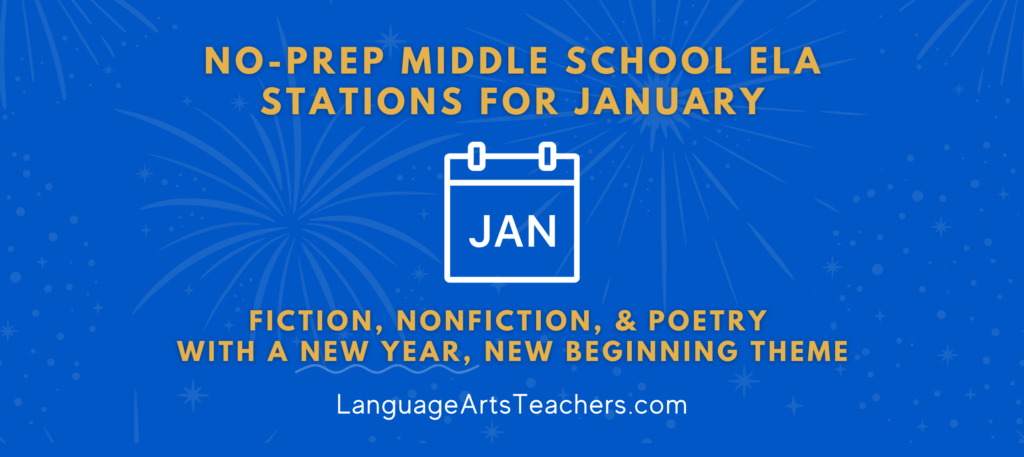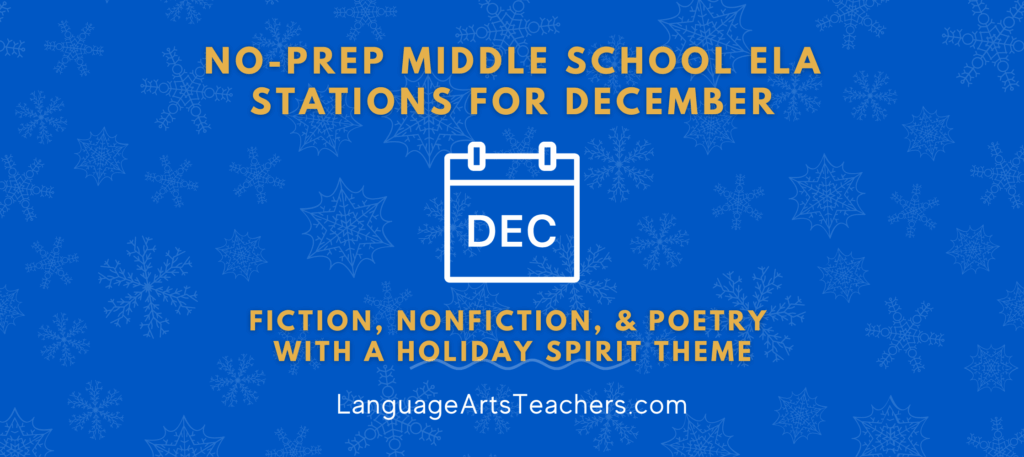If your Middle School ELA students struggle with reading, it’s easy to feel overwhelmed as their teacher.
What do you do when your 7th grader is reading at a 3rd or 4th grade level? How do you pull that up by several grades when you only get 40 minutes a day with them?
It’s a tough question…but I’m here to tell you two things…
First of all, you’re not alone. There are tons of teachers facing the same problem right now. (Just check out my free Middle School ELA teachers Facebook group if you don’t believe me!)
Second of all, there ARE some things you can do to help improve their scores—even if you only have 40 minutes a day!

Try to Pinpoint Why They’re Struggling
The first thing I recommend that you do when your students struggle with reading is to pinpoint why they’re struggling.
It’s not the same with every student!! (Trust me…)
Some students struggle with reading because they’re not native English speakers. ELL and ESL students have certain struggles when it comes to reading and comprehending English texts. And those struggles may not be the same as your native English-speaking students.
So ask yourself why they struggle… is it because they lack background knowledge or don’t understand language structures? Is it simply that they’re not good at taking tests? Or is it a lack of motivation—maybe problems at home that are seeping into the classroom?
Answering these questions will often help you craft the right strategy to improve your students’ reading scores.
Build Their Test-Taking Skills With Vocab Lessons
Next, I recommend focusing on their test-taking skills. Often, students get SUPER low reading scores because they’re simply bad at tasking tests. Like really bad…
You can help them get better at test-taking by focusing on academic vocabulary. Teach them how to understand questions.
Have you noticed that the language used in test questions is TOTALLY different than regular writing and text assignments?? Yeah… That’s because test questions use key words and phrases to fish for a particular answer. Teach your students how to spot those phrases so they can answer correctly.
Read Aloud Good Books in Class
Reading aloud is such a powerful tactic in the classroom. Not only does it do wonders for your students’ pronunciation, but it can also help struggling readers get better context.
Use the tone of your voice, hand gestures, and facial expressions to communicate the tone behind the words. (This is especially helpful for ELL and ESL readers… If you’ve ever learned a second language, you know how much you’ve relied on facial expressions to understand what someone is saying…)
It’s almost like pantomiming and overexaggerating the feelings, tone, etc. You might feel silly doing this, but believe me when I say it helps!!
Use Images to Support the Reading Topic
This is a fun and simple way to engage your students in the reading. Especially for students who have trouble imagining scenery in books… just showing a picture can bring the text to life.
Let’s say you’re studying Where the Red Fern Grows. You might bring in pictures of hunting dogs, scenery of the Ozarks, and a little boy to represent Billy.
If you have ELL and ESL students, go even further by putting the words in English below the photos. Then give them space to write the same word in their first language.
When Students Struggle With Reading, Separate the Text Into Chunks
My last suggestion is to separate big text assignments into chunks. Sometimes students struggle with reading because they get lost in the text.
They start reading, get confused, and then get even MORE confused as the text goes on. Help them out by breaking up the text into chunks and making sure they understand each one before moving on to the next.
One great way to make sure they understand each section is to discuss it as a class. Ask questions, get their input, and get them to share what’s going on in the passage. Verbalizing what they’ve just read can go a long way in helping them comprehend.
Have you tried any of these suggestions? How did they work for you? Let me know—I’d love to hear from you!
Stop feeling like you have to choose between prepping for class and enjoying family time by clicking the button below to grab several weeks of free bell-to-bell lesson plans for 6th, 7th, and 8th grade.




